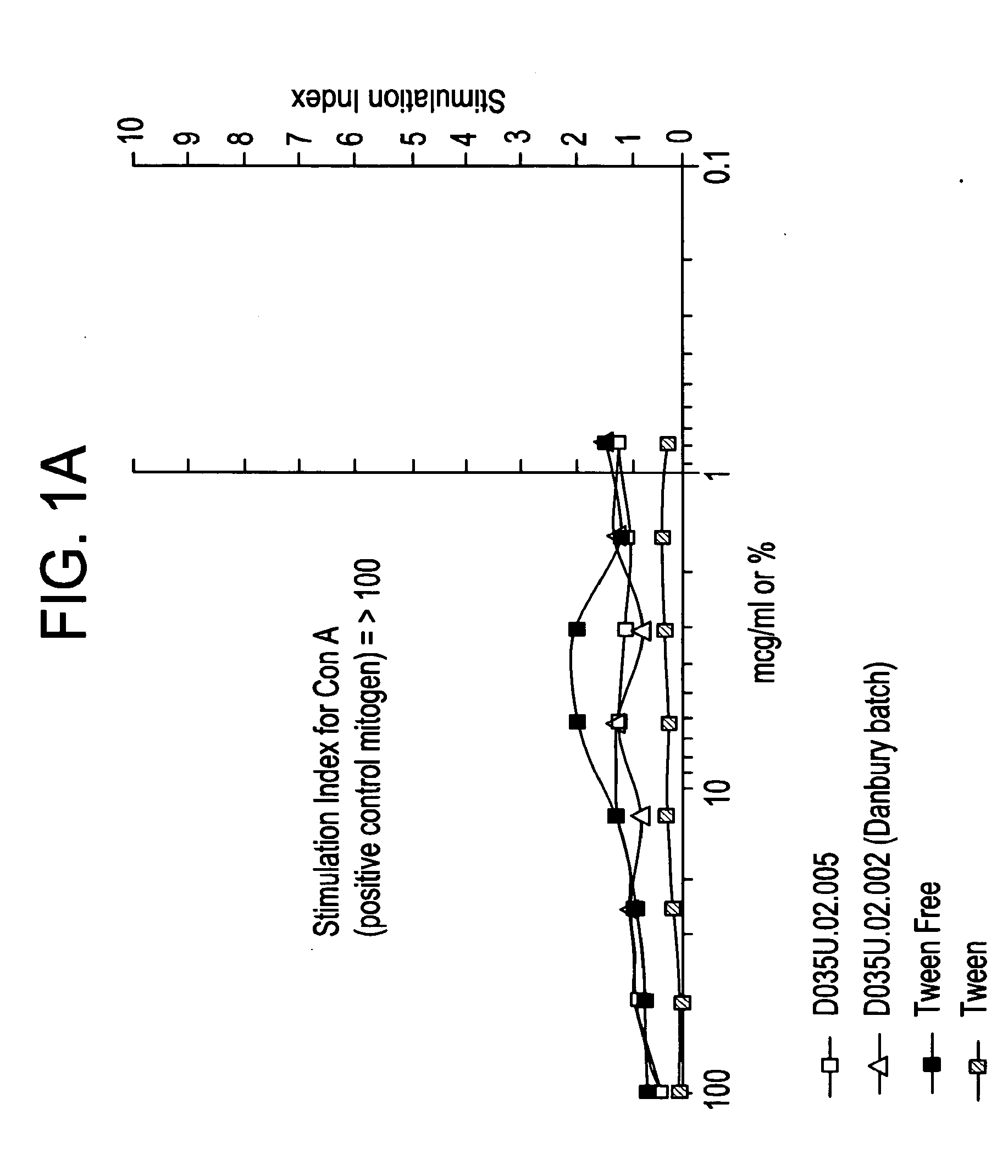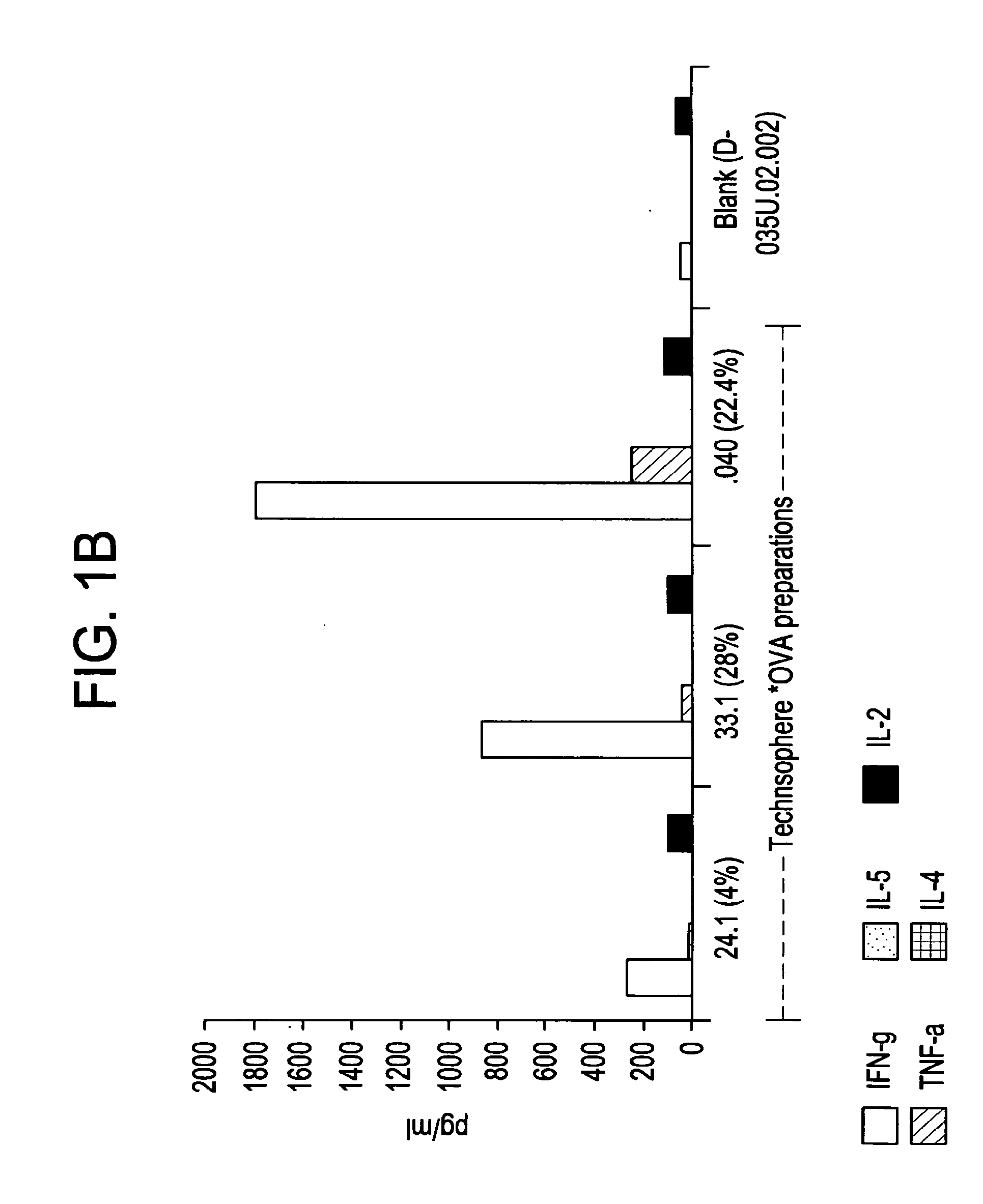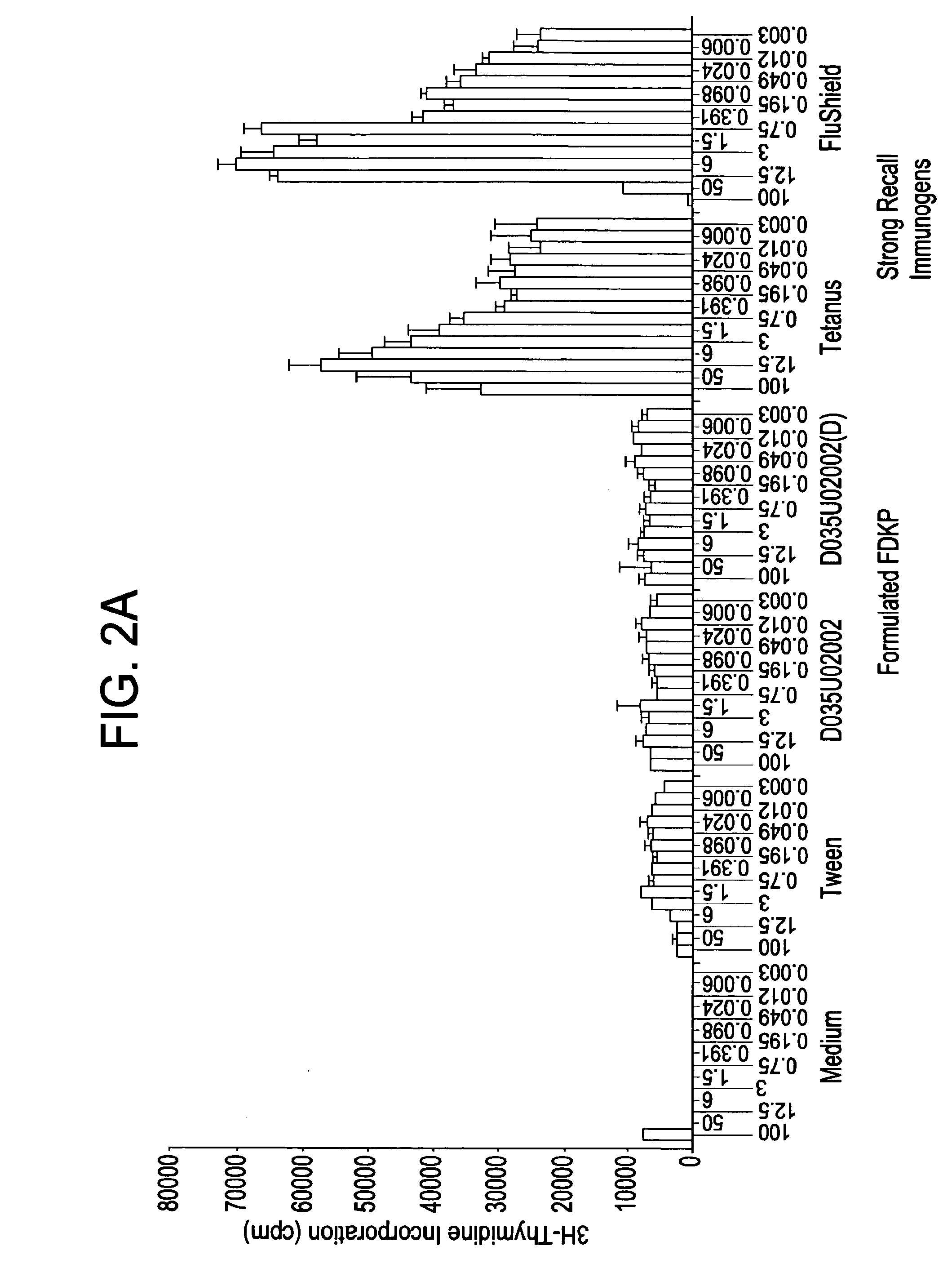Cell Transport Compositions and Uses Thereof
a cell transport and composition technology, applied in the direction of antibody medical ingredients, peptide/protein ingredients, antibody ingredients, etc., can solve the problems of not being able to reach an intracellular target, unsuitable for commercial development, and many therapeutic compounds are not clinically useful, so as to improve the intracellular delivery effect of compounds
- Summary
- Abstract
- Description
- Claims
- Application Information
AI Technical Summary
Benefits of technology
Problems solved by technology
Method used
Image
Examples
example 1
Fumaryl DKP does not Stimulate Innate Immunity
[0063]To rule out the possibility that DKP possesses immunostimulatory properties due to either its chemical composition or the possible mimicry of pathogenic sequences, e.g., killed M. tuberculosis, splenocytes from naïve Balb / c mice were incubated with three batches of ‘blank’ Fumaryl DKP (FDKP) formulated as microparticles and compared with FDKP-associated with OVA (‘TCNSP*OVA’) at various concentrations. This assay was selected due to the heightened sensitivity of resting T cells to minute quantities of contaminants or mitogens resulting in excitation and proliferation of these cells. Proliferative responses of the splenocytes were measured by a 3H-Thymidine incorporation assay. The FDKP blank microparticles from the various batches induced a comparable proliferation to a control (medium alone). These data indicate that the FDKP is not immunostimulatory.
[0064]An analysis of cytokines (IFNγ, TNF-α, IL-4, IL-5 and IL-2) secreted by the...
example 2
Transport Kinetics
[0071]Uptake experiments were conducted using ovalbumin (OVA) as the transport compound.
[0072]In one experiment, lung cells were incubated with the transport compound at varying incubation times. As shown in FIGS. 3a and 3b, approximately 50% of transport for OVA was achieved in the first 10 minutes with complete saturation (100%) occurring within 30 minutes at 37° C. These data indicate that uptake of a compound by cells is increased by the presence of FDKP.
[0073]FIG. 4 is a bar graph showing transport of OVA-FITC into A459 human lung cells after a 30-minute incubation of 20 micrograms / ml of OVA-FITC-succinyl or OVA-FITC-FDKP (OVA*TECH-FITC) at 37° C., 4° C., and 0° C. Cells were contacted with OVA or OVA-FDKP-microsphere complexes or OVA-Succinyl FDKP-microsphere complexes for 30 minutes prior to measuring fluorescence (as an indication of transport of the compound into the cells). Both complexes had greatly improved transport for all temperatures compared the tr...
example 3
Transport Enhancement in Spleen Cells
[0075]Uncultured primary cells were used to study the rate of transport of a compound into target cells. A time course comparing the rate of transport of the compound using isolated murine spleen cells was performed. Spleens from BALB / C mice were removed, and cell suspensions were prepared. Isolated cells were incubated in complete media (RPMI 1640+10% FBS, 1× Pen / Strep) at a density of 4×106 cells / mL. Ovalbumin-FITC or Ovalbumin-FITC / FDKP was added at a concentration of 20 μg / mL, and cells were incubated for indicated times at 37° C. Eight volumes of PBS were added at the end of each incubation period, and cells were kept on ice until the completion of all time points. Cells were centrifuged, re-suspended and analyzed by FACS for FITC uptake.
[0076]FIG. 5 is a bar graph showing FDKP-microsphere-facilitated transport of a test compound, ovalbumin, in uncultured spleen cells at 37° C. Enhancement in the uptake of ovalbumin by spleen cells was witne...
PUM
| Property | Measurement | Unit |
|---|---|---|
| size | aaaaa | aaaaa |
| diameter | aaaaa | aaaaa |
| diameter | aaaaa | aaaaa |
Abstract
Description
Claims
Application Information
 Login to View More
Login to View More - R&D
- Intellectual Property
- Life Sciences
- Materials
- Tech Scout
- Unparalleled Data Quality
- Higher Quality Content
- 60% Fewer Hallucinations
Browse by: Latest US Patents, China's latest patents, Technical Efficacy Thesaurus, Application Domain, Technology Topic, Popular Technical Reports.
© 2025 PatSnap. All rights reserved.Legal|Privacy policy|Modern Slavery Act Transparency Statement|Sitemap|About US| Contact US: help@patsnap.com



